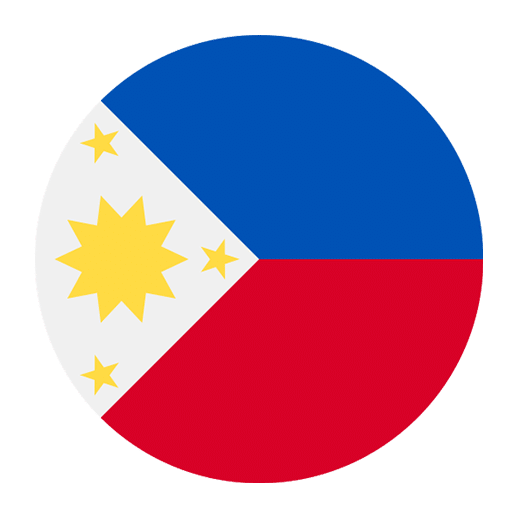Tagalog, a prominent language in the Philippines, plays a significant role in shaping and preserving Filipino identity. Understanding its importance provides a deeper appreciation for the culture, history, and social fabric of the Filipino people. This article explores the multifaceted significance of Tagalog in Filipino identity, tracing its roots, its role in national unity, its influence on literature and media, and its enduring presence in modern Filipino life.
The Historical Roots of Tagalog
The Tagalog language is part of the Austronesian language family and has been spoken in the Philippines for over a millennium. Its long history is intertwined with the evolution of Filipino culture and society. Tagalog was traditionally spoken in the central and southern regions of Luzon, particularly in the areas surrounding Manila, which later became the capital of the Philippines.
During the pre-colonial period, Tagalog was used in literature, oral traditions, and daily communication. Ancient Tagalog literature, such as the epic poems and songs known as “awit” and “corridos,” were integral to community life and cultural expression. These literary forms not only entertained but also conveyed moral lessons and historical narratives.
The arrival of Spanish colonizers in the 16th century marked a significant shift in the linguistic landscape. Spanish became the dominant language of administration, education, and religion. However, Tagalog persisted as the language of the masses, a testament to its resilience and deep cultural roots. It continued to be used in homes, markets, and local governance, preserving Filipino identity amidst colonial influences.
Tagalog and National Unity
The quest for national unity and identity became a central theme during the Philippine Revolution against Spanish rule in the late 19th century. Filipino revolutionaries recognized the importance of a common language in fostering a sense of national solidarity. Tagalog, being widely spoken and culturally significant, emerged as a natural choice.
Dr. José Rizal, the national hero of the Philippines, played a pivotal role in this linguistic movement. His novels “Noli Me Tangere” and “El Filibusterismo,” written in Spanish but later translated into Tagalog, ignited nationalist sentiments and inspired the fight for independence. Rizal’s writings underscored the power of language as a tool for awakening national consciousness.
In 1937, President Manuel L. Quezon proclaimed Tagalog as the basis for the national language, which would later be called Filipino. This decision aimed to bridge linguistic diversity and create a unifying national identity. The adoption of Tagalog as the foundation for Filipino symbolized a commitment to embracing indigenous cultural heritage while fostering national cohesion.
Tagalog in Literature and Media
Tagalog has a rich literary tradition that continues to thrive in contemporary Filipino culture. From classical literature to modern works, Tagalog literature reflects the evolving societal values, struggles, and aspirations of the Filipino people.
The “balagtasan,” a traditional form of poetic debate, exemplifies the eloquence and intellectual depth of Tagalog. Named after Francisco Balagtas, a renowned Tagalog poet, the balagtasan is a performance art that showcases the beauty and versatility of the language. It remains a popular cultural event, demonstrating the enduring relevance of Tagalog in literary expression.
In the realm of modern literature, Tagalog novels, short stories, and poetry explore diverse themes, from social issues to personal experiences. Writers like Lualhati Bautista, F. Sionil José, and Ricky Lee have contributed significantly to Tagalog literature, earning acclaim both locally and internationally. Their works resonate with readers, offering insights into Filipino life and identity.
The influence of Tagalog extends beyond literature into various forms of media. Tagalog films, television shows, and music are integral to Filipino popular culture. The “Philippine cinema” or “Pinoy cinema” has produced iconic films that capture the essence of Filipino society and its complexities. Directors like Lino Brocka and Ishmael Bernal have used Tagalog as a medium to address social issues and advocate for change.
Television shows in Tagalog, ranging from dramas to comedies, enjoy widespread popularity. These programs not only entertain but also reflect contemporary Filipino life, values, and humor. Tagalog music, from traditional folk songs to modern pop, serves as a powerful medium for expressing emotions, stories, and cultural identity. Artists like Freddie Aguilar, Regine Velasquez, and Gloc-9 have made significant contributions to the Tagalog music scene, resonating with audiences across generations.
Tagalog in Education and Governance
The role of Tagalog in education and governance underscores its importance in shaping Filipino identity. The inclusion of Filipino (based on Tagalog) as a subject in the national curriculum ensures that students across the country learn the language, fostering a sense of national pride and unity. This educational policy promotes linguistic proficiency and cultural awareness, enabling future generations to connect with their heritage.
In governance, the use of Tagalog in official communication and public discourse enhances accessibility and inclusivity. Government agencies and institutions often provide information in both English and Filipino, ensuring that citizens can engage with and understand policies, programs, and services. This linguistic inclusivity strengthens democratic participation and empowers individuals to contribute to nation-building.
Tagalog in Everyday Filipino Life
Tagalog is not just a language of literature, media, and governance; it is an integral part of everyday Filipino life. It is the language spoken in homes, marketplaces, and social gatherings. It is the medium through which families communicate, friends share stories, and communities come together.
The use of Tagalog in daily interactions fosters a sense of belonging and cultural continuity. It is a reminder of shared history, traditions, and values. For many Filipinos, speaking Tagalog is an expression of identity and pride. It is a way to honor their ancestors and preserve their cultural heritage.
In urban areas, where multiple languages and dialects converge, Tagalog often serves as a lingua franca, facilitating communication and understanding among diverse linguistic groups. This role as a bridge language underscores its unifying potential and reinforces its importance in fostering social cohesion.
The Resilience of Tagalog Amidst Globalization
In an increasingly globalized world, languages face the challenge of maintaining relevance and vitality. English, as a global lingua franca, exerts a strong influence on many societies, including the Philippines. However, Tagalog has demonstrated remarkable resilience, adapting to changing times while retaining its cultural essence.
The integration of Tagalog with modern technology and digital platforms has played a crucial role in its continued relevance. Social media, online publications, and digital content in Tagalog have expanded its reach and accessibility. This digital presence ensures that Tagalog remains a dynamic and evolving language, capable of engaging with contemporary issues and trends.
Moreover, the Filipino diaspora has contributed to the global presence of Tagalog. Overseas Filipino workers (OFWs) and immigrants maintain connections with their homeland through language and culture. Tagalog-speaking communities around the world celebrate Filipino traditions, share stories, and pass on the language to the next generation. This transnational dimension of Tagalog reinforces its significance in Filipino identity, both locally and globally.
Conclusion
Tagalog is more than just a language; it is a cornerstone of Filipino identity. Its historical roots, role in national unity, influence on literature and media, presence in education and governance, and significance in everyday life all contribute to its enduring importance. Tagalog embodies the resilience, diversity, and richness of Filipino culture. It serves as a bridge between the past and the future, connecting generations and communities.
Understanding the importance of Tagalog in Filipino identity allows us to appreciate the depth and complexity of Filipino culture. It reminds us of the power of language to shape societies, foster unity, and preserve heritage. As we celebrate the beauty and significance of Tagalog, we honor the spirit of the Filipino people and their enduring quest for identity and self-expression.

